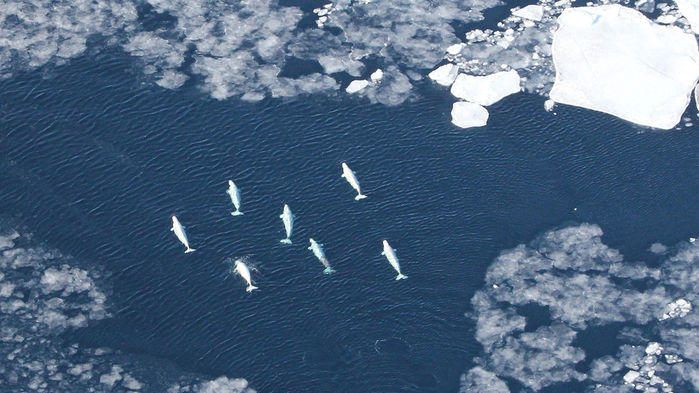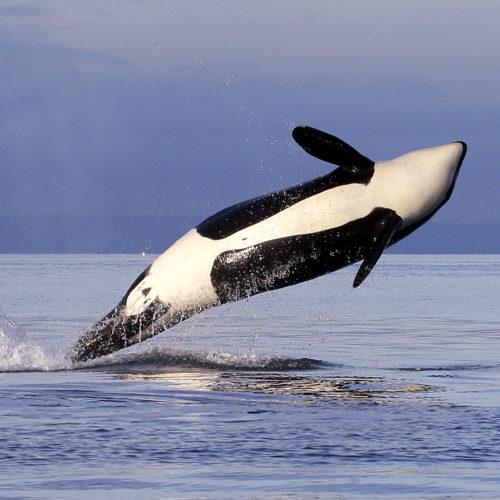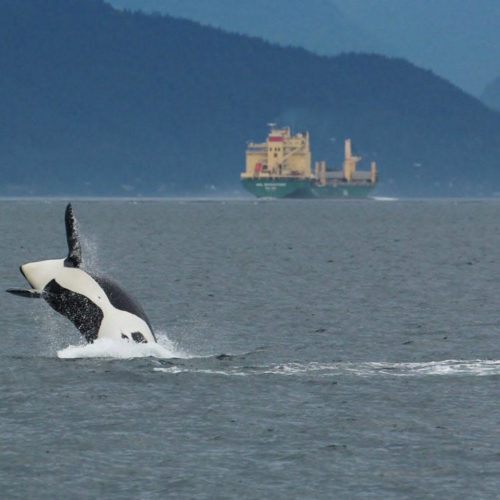
Study: In Warming Arctic, Increased Sea Vessel Traffic Puts Many Marine Mammals At Risk
New trade routes have opened up in the Arctic as melting sea ice makes those waters passable. Because it’s just starting, relatively little data exists about the impacts of the increased shipping traffic on marine mammals.
A new study from researchers at the University of Washington identifies species that are at highest risk. Some of the findings may have parallels to concerns about life in the Salish Sea.
The study looked at 80 subpopulations of the seven species of marine mammals that live in the Arctic and at the risks posed to them on or near major shipping routes during the month of September. That’s when there’s the most traffic because there’s the most open water due to seasonal ice melt.
The study found the most impacted species to be narwhals or tusked whales, which are also known colloquially as “the unicorns of the sea.” They migrate though parts of the Northwest Passage and navigate by sound. Beluga and bowhead whales and walruses were also identified as vulnerable.
Somewhat surprising to lead author Donna Hauser, a former postdoc at the UW’s Polar Science Center and now an assistant research professor at the University of Alaska Fairbanks, was the discovery that polar bears were found to be the least vulnerable to the impacts of new marine traffic, even though the melting sea ice is known to be a problem for them.
“There’s lots of evidence that many polar bear populations will or are already experiencing negative impacts from sea ice loss,” she said.
“But in our case, we found that vessels don’t necessarily pose the same risk to polar bears as they do to some of the other marine mammal species such as the whales – like narwhals and bowhead whales.”
Hauser says another important aspect of her team’s findings is the identification of two so-called pinch points in the Arctic. These are narrow passageways along the new trade routes.
“So it’s an obligatory pathway for vessels, but it’s also an obligatory pathway or transit point, access point for thousands of migratory marine mammals that seasonally move through that region,” Hauser said.
These pinch points were shown to have a risk of conflicts two to three times higher than on other parts of the shipping routes. Conflicts include vessel strikes and noise that can interfere with echolocation.
Potential remedies discussed in their paper include some being piloted in the Canadian areas of Salish Sea, such as slowing vessel traffic in sensitive areas.
The study is published in the July 2 issue of the Proceedings of the National Academy of Sciences.
Copyright 2018 KNKX
Related Stories:

Second year of funding to the arts sees more recipients throughout Washington
Catherine McKinney is a sister of a person with developmental delays. She knows firsthand the joys and challenges families face when seeking opportunity and community for their loved ones.
At Clallam Mosaic, where she is the program and communications director, McKinney helps families like hers find community through recreational programs that range from martial arts to quilting. Since 2019, the organization on the Olympic Peninsula has expanded its arts offerings.

New Washington Whale-Watching Boat Rules To Help Struggling Orcas Take Effect In 2021
According to the rules approved by the commission last week, from July through September, commercial whale watching companies can view endangered Southern Resident orcas during two, two-hour periods daily, The Skagit Valley Herald reported.

Pandemic Gives Pacific Northwest Whales A Respite From Din Of Underwater Noise
American and Canadian marine scientists — and one talented dog — are seizing an unexpected opportunity presented by the coronavirus pandemic. They are trying to establish whether Pacifc Northwest whales benefit from the current drop in boat traffic and underwater noise.















